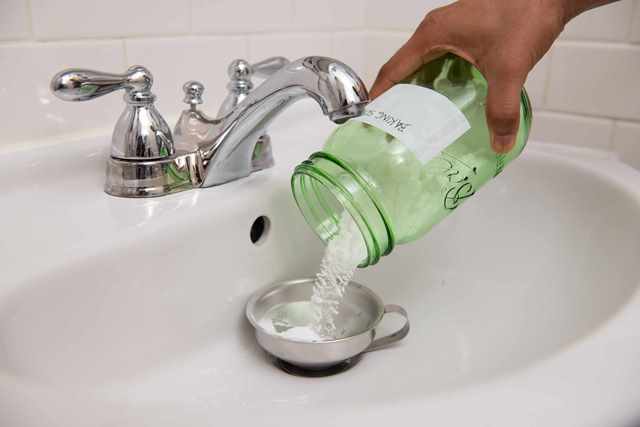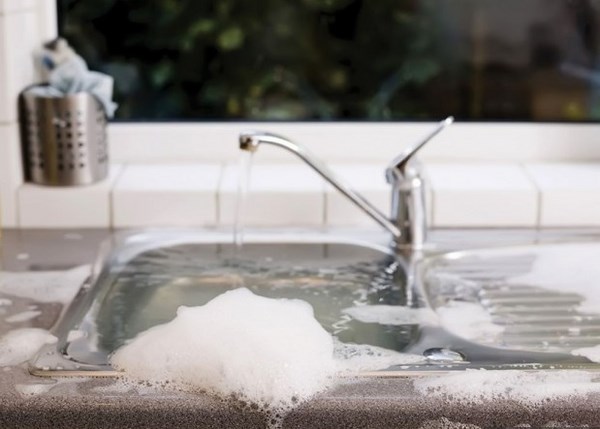When Water Doesn't Leave Away - 6 Reasons Your Kitchen Sink Is Acting Up
When Water Doesn't Leave Away - 6 Reasons Your Kitchen Sink Is Acting Up
Blog Article
They are making a few good annotation about Five Ways to Fix a Slow Sink Drain in general in the article below.

It's not typical for your cooking area sink to clog up several times in one month. If your sink obstructs twice a week, there's some difficulty taking place.
A blocked kitchen area drainpipe doesn't just reduce your chores, it weakens your entire plumbing system, gradually. Here are some usual habits that motivate sink clogs, and just how to avoid them.
You need correct waste disposal
Reusing waste is great, however do you take notice of your organic waste as well? Your cooking area ought to have 2 different waste boxes; one for recyclable plastics and one more for natural waste, which can become compost.
Having actually a designated trash bag will certainly aid you and your household stay clear of throwing pasta and various other food residues down the drain. Usually, these residues soak up moisture as well as come to be obstructions.
The mistake isn't from your kitchen sink at all
Maybe the issue isn't from your kitchen area sink, however the whole water drainage system. In such an instance, you might see that sinks and drains get clogged every other week. You need a professional plumbing service to fix this.
You're throwing coffee down the drain
Used coffee grounds and coffee beans still absorb a significant amount of moisture. They may seem tiny enough to throw down the drain, but as time goes on they begin to swell and occupy even more room.
Your coffee premises need to enter into natural garbage disposal. Whatever fraction leaves (possibly while you're washing up) will be taken care of during your monthly cleaning.
You have actually been consuming a lot of greasy foods
Your kitchen sink might still obtain obstructed despite natural garbage disposal. This might be due to the fact that you have a diet regimen abundant in oily foods like cheeseburgers.
This grease coats the insides of pipes, making them narrower and more clog-prone.
Use a plunger
Your pipe had not been dealt with appropriately in the first place
If you have actually been doing none of the above, however still get normal blockages in your kitchen sink, you should certainly call a plumber. There could be a problem with just how your pipelines were installed.
While your plumber gets here, check for any leakages or irregularities around your cooking area pipelines. Don't try to repair the pipelines on your own. This may create an accident or a cooking area flood.
Someone attempted to wash their hair in the cooking area sink
There's a right time and also location for everything. The kitchen area sink is just not the ideal place to clean your hair. Washing your hair in the cooking area sink will make it obstruct sooner or later unless you use a drainpipe catcher.
While a drain catcher might capture the majority of the fallouts, some hairs may still survive. If you have thick hair, this may suffice to decrease your drainage and also eventually create a blockage.
There's even more dirt than your pipelines can manage
If you get fruits straight from a farm, you might notice even more kitchen dust than other people that go shopping from a mall. You can quickly fix this by cleaning up the fruits and veggies appropriately before bringing them right into the house.You need correct waste disposal
My Kitchen Sink Won’t Drain - What Should I Do?
If Your Sink Has a Garbage Disposal...
Turn on the disposal. If the disposal hums and doesn’t turn, then there’s clog in the disposal unit.
Go to your circuit breaker panel, and switch off the circuit breaker to your garbage disposal.
Back in your kitchen, double-check that your garbage disposal is off by trying to turn it on. The disposal should not move, and it should not make any noise.
Lie down underneath your sink so that you can see and access the bottom of the disposal unit. Look for a hole that looks like the head of a hex-head bolt in the center of the unit.
Place an Allen wrench inside this hole and turn it from side to side until you feel a decrease in resistance and are able to rotate the wrench completely in a single direction. This action rotates your disposal’s blade manually.
Put the wrench aside, and press the disposal unit’s reset button or switch.
Flip your garbage disposal’s circuit breaker switch back on, and turn on the unit to see if the obstruction has cleared. If it hasn’t, repeat the steps above until the obstruction is removed.
How to Unclog a Kitchen Sink Drain
If you have a double bowl sink, seal one side of the sink with an airtight lid or a second plunger before plunging the other side. Otherwise, you won’t be able to create adequate suction.
Place the cup of the plunger completely over the drain opening.
Turn on the faucet, and let the water run until it completely covers the cup of the plunger.
Start plunging by pushing the plunger down and pulling up again in order to build up suction. Make sure that the edges of the plunger stay in contact with your sink, or else you’ll lose the suction.
If you have trouble forming a seal between your sink and plunger, add petroleum jelly to the mouth of your plunger, and try again.
Plunge about five or six times before removing the plunger to see if water starts to drain properly. In some cases, you’ll even be able to feel the clog become dislodged while you plunge because suddenly there will be much less resistance. Repeat the plunging process until the clog clears.
Once water is draining properly again, run hot water down the drain for 5 minutes to help clear away grease, grime, and debris from the clog. https://www.plumbingjoint.com/blog/2019/august/my-kitchen-sink-won-t-drain-what-should-i-do-/

My Kitchen Sink Won’t Drain - What Should I Do?
If Your Sink Has a Garbage Disposal...
How to Unclog a Kitchen Sink Drain
https://www.plumbingjoint.com/blog/2019/august/my-kitchen-sink-won-t-drain-what-should-i-do-/
Do you appreciate more info about Five Ways to Fix a Slow Sink Drain? Create a remark further down. We will be delighted to see your thinking about this write-up. We hope to see you back again before long. Do you know anybody else who is involved in What To Do When Your Kitchen Sink Won’t Drain? Please feel free to promote it. I treasure reading our article about Why Is My Sink Not Draining?.
Schedule Now!
Report this page